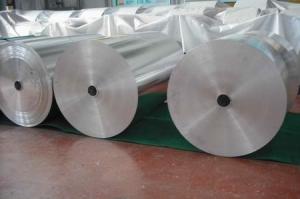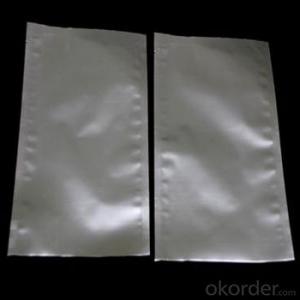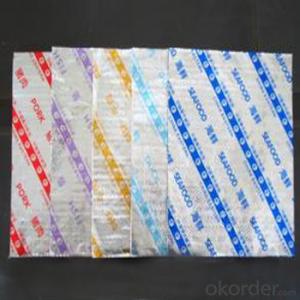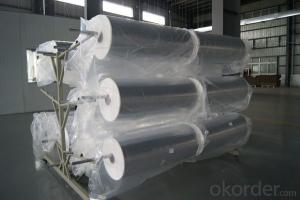Extra Large Aluminum Foil
Extra Large Aluminum Foil Related Searches
Led Light Bulbs For Ceiling Fixtures Led Lamps For Ceiling 42 In Ceiling Fan With Light Aluminum Coil Stock For Gutters Aluminum Foil For The Grill Hole Saw For Aluminum Plate Aluminum Tread Plate For Trailer Bow Plate For Aluminum Boat Aluminum Foil For Grow Room Aluminum Foil For Joint PainHot Searches
Stock Price For Aluminum Aluminum Coil Stock For Sale Aluminum Gutter Coil For Sale Used Aluminum Scaffolding For Sale 1/4 Aluminum Plate For Sale Aluminum Bar Stock For Sale Aluminum Round Stock For Sale Aluminum Diamond Plate For Sale Aluminum Scaffolding For Sale Craigslist 6061 Aluminum Plate For Sale Aluminum Dock Plate For Sale 7075 Aluminum Plate For Sale Aluminum Tread Plate For Sale Aluminum Checker Plate For Sale Aluminum Plate For Sale Near Me Plate Aluminum For Sale Aluminum Plate For Sale Aluminum Square Stock For Sale Aluminum Flat Stock For Sale Billet Aluminum Stock For SaleExtra Large Aluminum Foil Supplier & Manufacturer from China
Okorder.com is a professional Extra Large Aluminum Foil supplier & manufacturer, offers integrated one-stop services including real-time quoting and online cargo tracking. We are funded by CNBM Group, a Fortune 500 enterprise and the largest Extra Large Aluminum Foil firm in China.Hot Products
FAQ
- The available coil widths for aluminum coils may vary based on specific requirements and manufacturing capabilities. However, typical coil widths for aluminum coils range from 12 inches (304.8 mm) to 60 inches (1524 mm). These standard widths are commonly utilized in construction, automotive, and packaging industries. Custom coil widths, narrower or wider than the standard range, can also be provided by manufacturers to meet specific customer needs. This allows for increased flexibility in design and application. It is important to acknowledge that the availability of specific coil widths may differ depending on the supplier and the aluminum alloy used. Therefore, it is advisable to consult a reputable aluminum coil supplier to determine the exact range of coil widths available for a particular project or application.
- Aluminum coils are tested for surface hardness through a variety of methods to ensure their quality and suitability for various applications. One common method used is the Rockwell hardness test. In the Rockwell hardness test, a diamond or hardened steel ball is pressed into the surface of the aluminum coil using a specified amount of force. The depth of the indentation made by the ball is measured, and a hardness value is determined based on the difference in depth before and after applying the force. This value is then compared to a hardness scale to determine the surface hardness of the aluminum coil. Another method used is the Brinell hardness test. In this test, a hardened steel ball is pressed into the surface of the aluminum coil using a specified force. The diameter of the resulting indentation is measured, and a hardness value is calculated based on the applied force and the size of the indentation. This value is then compared to a hardness scale to determine the surface hardness of the aluminum coil. Both the Rockwell and Brinell hardness tests are non-destructive and provide accurate measures of the surface hardness of aluminum coils. These tests help manufacturers and customers ensure that the coils meet the required hardness specifications for their intended applications, such as in the automotive or construction industries. By testing for surface hardness, potential issues like brittleness or inadequate strength can be identified and addressed before the aluminum coils are used in the production process.
- Automotive body panels can indeed utilize aluminum coils. This material, being lightweight and extremely malleable, is an excellent option for automotive purposes. It strikes a fine equilibrium between strength and weight, thereby enhancing fuel efficiency and overall vehicle performance. Furthermore, aluminum boasts exceptional resistance to corrosion, a vital characteristic for body panels enduring harsh environmental conditions. The popularity of incorporating aluminum coils in the production of automotive body panels has been steadily rising as automakers endeavor to lessen vehicle weight and enhance sustainability.
- I bought a house that is older with aluminum windows, and the last owner did not seem to clean them for quite some time. The aluminum frames are a silvery milky white color and my neighbors that have the same windows look like chrome. I have brushed these windows with scrub brushes and green scouring pads even aluminum wheel cleaner, now my frame is a clean milky grey color, it just isnt polished like my neighbor has it, his is like chrome. I have tried silver polishes and this doesn't remove the grey film either - i need something stronger. Can anyone help???
- Your aluminium windows are possibly anodised which is a process carried out before the windows are assembled.Anodising is like a hard finished skin ,silver in your windows which was probably a semi sheen to begin with, some times this finish oxidises causing this white milky appearance. Anodising can be black,gold red, brown, and possibly other colours too used on motor cycles and sports equipment etc. Your neighbours window were probably anodised and polished (almost like chrome) again this would have been carried out before the windows were assembled. If this is the case no amount of cleaning will polish your anodising to a bright shiny finish. Contact an aluminium window installer/manufacturer as they have cleaning blocks, These look rather like a large pencil eraser containing metallic abrasive particles this may help. Your grey film is lightly to be the original siver turned dull. consult your aluminium window supplier to see if they can offer a better solution It may be possible to spray paint your window frames these would require acid etching and is a specialist procedure hope this is helpful good luck
- Domestic production of color coated aluminum coil manufacturers which good?
- Color coated aluminum coil has two kinds of polyester color coating and fluorocarbon coating.
- Some common international standards and certifications for aluminum coils include ISO 9001 (Quality Management System), ISO 14001 (Environmental Management System), and ISO 45001 (Occupational Health and Safety Management System). Other certifications specific to aluminum coils may include ASTM (American Society for Testing and Materials) standards and certifications from industry associations such as the Aluminum Association.
- The production of HVAC ductwork heavily relies on the utilization of aluminum coils. These coils are crafted from top-notch aluminum material that possesses qualities such as being lightweight, long-lasting, and resistant to corrosion, thus making them the perfect choice for HVAC systems. To commence the process of incorporating aluminum coils into HVAC ductwork production, the first step involves manufacturing. Initially, the coils are rolled into thin sheets, which are then precisely cut into specific widths and lengths that match the size requirements of the ductwork. This adaptability in sizing allows for the creation of customized ductwork that fits flawlessly into various HVAC systems. Once the aluminum coils have been cut to the desired dimensions, they are then fashioned into the shape of the ductwork. This can be achieved through a variety of methods, including bending, folding, or rolling, depending on the design and specifications of the ductwork. One of the notable advantages of employing aluminum coils in HVAC ductwork production is their superb thermal conductivity. Aluminum boasts exceptional heat-conducting properties, which means it can effectively transfer heat or cold air throughout the HVAC system. This characteristic is crucial for the proper functionality of the ductwork, as it ensures the desired temperature is maintained in different areas of a building. Furthermore, aluminum coils are renowned for their resistance to corrosion, which is of utmost importance in HVAC systems. The coils are exposed to various elements, such as moisture, which can lead to rust and deterioration in other materials. However, aluminum naturally forms a protective oxide layer that prevents corrosion, guaranteeing the longevity and dependability of the HVAC ductwork. Additionally, the lightweight nature of aluminum coils makes them simple to handle and install. This decreases the labor and time required for ductwork installation, resulting in cost savings for both manufacturers and installation teams. Moreover, the lightweight nature of aluminum coils reduces the overall weight of the HVAC system, making it more energy-efficient and alleviating strain on other components. In conclusion, aluminum coils serve as an integral component in the production of HVAC ductwork. Their lightweight, durable, and corrosion-resistant properties, combined with exceptional thermal conductivity, render them ideal for efficiently circulating air throughout the HVAC system. Furthermore, their flexibility in sizing and ease of installation contribute to their widespread utilization in the HVAC industry.














































